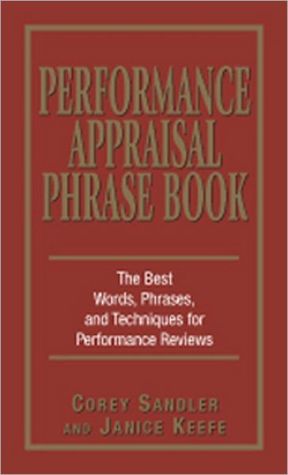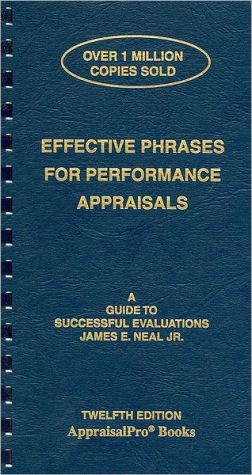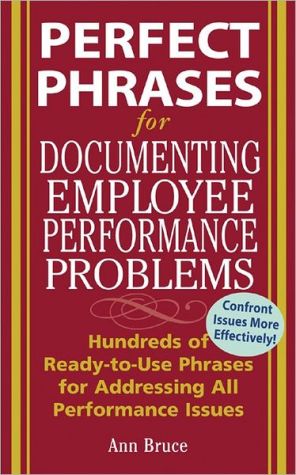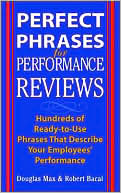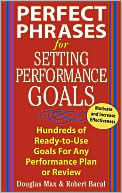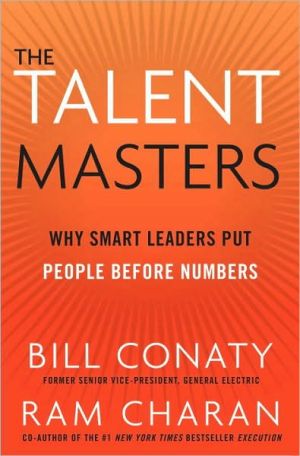Performance Appraisals Phrase Book: The Best Words, Phrases, and Techniques for Performace Reviews
You'll never struggle with performance appraisals again!\ Do you dread writing employee performance evaluations? Do you struggle for hours to find just the right words of praise, avoid repetition, and tread the fine line between constructive" and "criticism"?\ Performance Appraisal Phrase Book makes it easy for you. Featuring concise sections on how to write the evaluation, handle tricky legal issues, and verbally discuss the evaluation, this book also includes a directory of thousands of...
Search in google:
INTRODUCTION\ Life seems so very simple when accomplishments can be judged in black and white. If we're paid for each widget we make, each mile we drive, or each piece of paper we put into a box, we can learn to live-at least on some levels-with our lot in life. In theory, we know if we can work a little longer or a little harder we can earn a bit more. And we can readily understand that if we don't make enough widgets or drive sufficient miles or pass the required number of papers, we may not be able to hold on to our jobs or receive a promotion or a pay increase. But for most of us, life is more complicated. We exist in a world that is painted in shades of gray. What makes a customer service representative a good employee? How do you rate the accomplishments and future job prospects of a corporate trainer? What makes a government or military functionary worthy of an increase in job and pay grade? The answer: a carefully considered, objective judgment, consistently applied by a qualified supervisor.\ The Purpose of an Employee Evaluation\ Why do we conduct employee evaluations? It's not because we feel an overwhelming urge to make judgments about others just for the sake of doing so. There are some very specific organizational needs that are fulfilled by a properly conducted evaluation:\ *To lay the groundwork for a promotion or salary increase for a star employee;\ *To attempt to motivate a less-than-stellar performer who has the potential for greater achievement;\ *To lay the groundwork for the dismissal of an uncooperative, incapable, or otherwise unacceptable worker, and\ *To help a company or agency conduct an inventory of its personnel, in search of ways to improve productivity, reduce redundancy, and find available workers for new assignments.\ The best reason for an elaborate and careful process for employee evaluations is that it is the right thing to do, guaranteeing everyone a fair deal. The other reason, alas, is that we live in a litigious world, with what seems like a lawyer lurking behind every tree.\ The importance of employee evaluations is the establishment of a codified, consistent process to evaluate quantitative and qualitative performance of employees. Properly done, an employer is able to say: "You may not agree with the judgment or be happy with the outcome, but we can prove that every worker is held to the same standard and evaluated in the same way."\ Earlier, we defined a proper employee evaluation as a carefully considered, objective judgment, consistently applied by a qualified supervisor.\ Let's break that down definition into its components:\ *Carefully considered. The evaluation has to be based on a thorough and conscientious observation of the employee and work performed.\ *Objective judgment. There has to be no hint of bias against a particular employee or group of employees.\ *Consistently applied. The criteria used in the evaluation must be the same for all employees with the same responsibilities.\ *Qualified supervisor. The evaluator has to be a manager or supervisor with first-hand knowledge of the quality of work performed, and the personal behavior of the employee.\ \ One of the basic rules of procedure at the U.S. Supreme Court, the highest court in the land, is that justices strive to not only avoid any actual conflicts of interest but also to avoid the appearance of a conflict. In employee evaluations, the same principle applies: performance guidelines should not include any subjectivity or the appearance of subjectivity.\ The key to proper rating is the establishment of substantial and objective standards and goals.\ A performance appraisal is built upon the foundation of a well-crafted job description. The employee is given notice of reasonable expectations and goals, and the supervisor has a framework in place for evaluation.\ An overly broad or unreasonably demanding job description is an invitation for trouble, from friction between employee and supervisor up through lawsuits over termination.\ Any boss can fire an employee. If you're looking for a script, just watch television sitcoms: "You're fired!" Cue the laugh track; actor exits stage left.\ But in the real world, an out-of-the-blue "You're fired!" is more likely to receive a different response: "You'll be hearing from my lawyer", or "I'll take this up with my union steward."
Chapter One: Can Performance Really be Evaluated? Chapter Two: Insider Tips for Employee Evaluation Chapter Three: Legal Matters Chapter Four: Strategies for Dealing with Unsatisfactory Performance Chapter Five: Qualitative Attributes Chapter Six: Quantitative Attributes Chapter Seven: Management Skills Chapter Eight: Personality and Human Relations Chapter Nine: Professional Skills Chapter Ten: Nouns and Adjectives Chapter Eleven: Nouns and Adverbs Chapter Twelve: Just for Laughs
